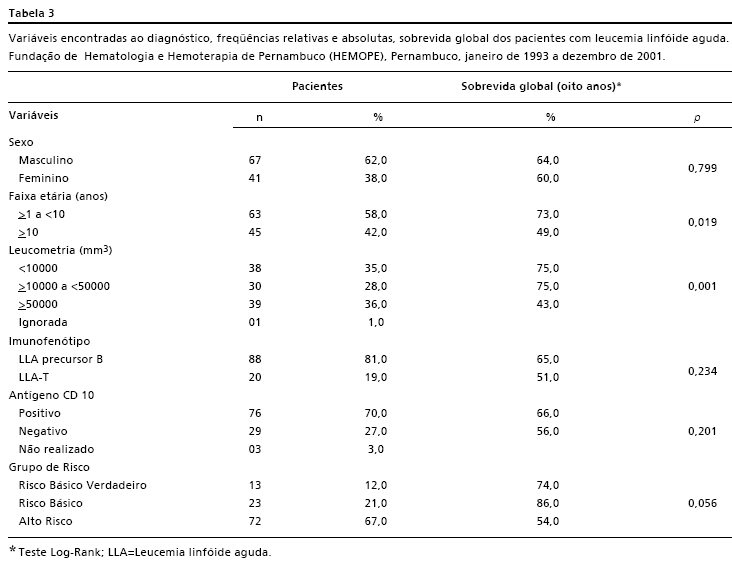OBJETIVES: to describe the clinical and laboratory characteristics, determine rates of response to treatment and pinpoint risk factors that influence the survival of pediatric patients with acute lymphoblastic leukemia (ALL). METHODS: this is a retrospective series of case studies involving 108 patients aged 18 years or under hospitalized for ALL treatment at the Fundação de Hematologia e Hemoterapia de Pernambuco (HEMOPE), Brazil, between January 1993 and December 2001. The following variables were analyzed: gender, age, main symptoms and signs, white blood-cell count, immunophenotype and risk group on diagnosis; rates of remission and relapse, death and overall survival; place of relapse and risk factors for survival. Descriptive measurements were used for the statistical analysis. The patient survival time was estimated using the Kaplan-Meier survival function and Log Rank. The effect of risk factors on survival time was evaluated using the Cox Regression Model. RESULTS: the results showed a male:female ratio of 1.7:1, a median age of eight years on diagnosis, the frequency of musculoskeletal complaints was 51%, of infiltration of the central nervous system 8%, of ALL-Precursor B 81% and ALL-T 19%. The distribution of the groups corresponded to True Basic Risk (12%), Basic Risk (21%) and High Risk (67%). The rates of remission, relapse and overall survival were 86%, 24% and 62.5%, respectively. CONCLUSIONS: the variable having an impact on overall survival was the white blood-cell count. The overall survival rate in the study was influenced by the high frequency of high-risk patients.
Acute lymphoblastic leukemia; Risk factors; Survival





